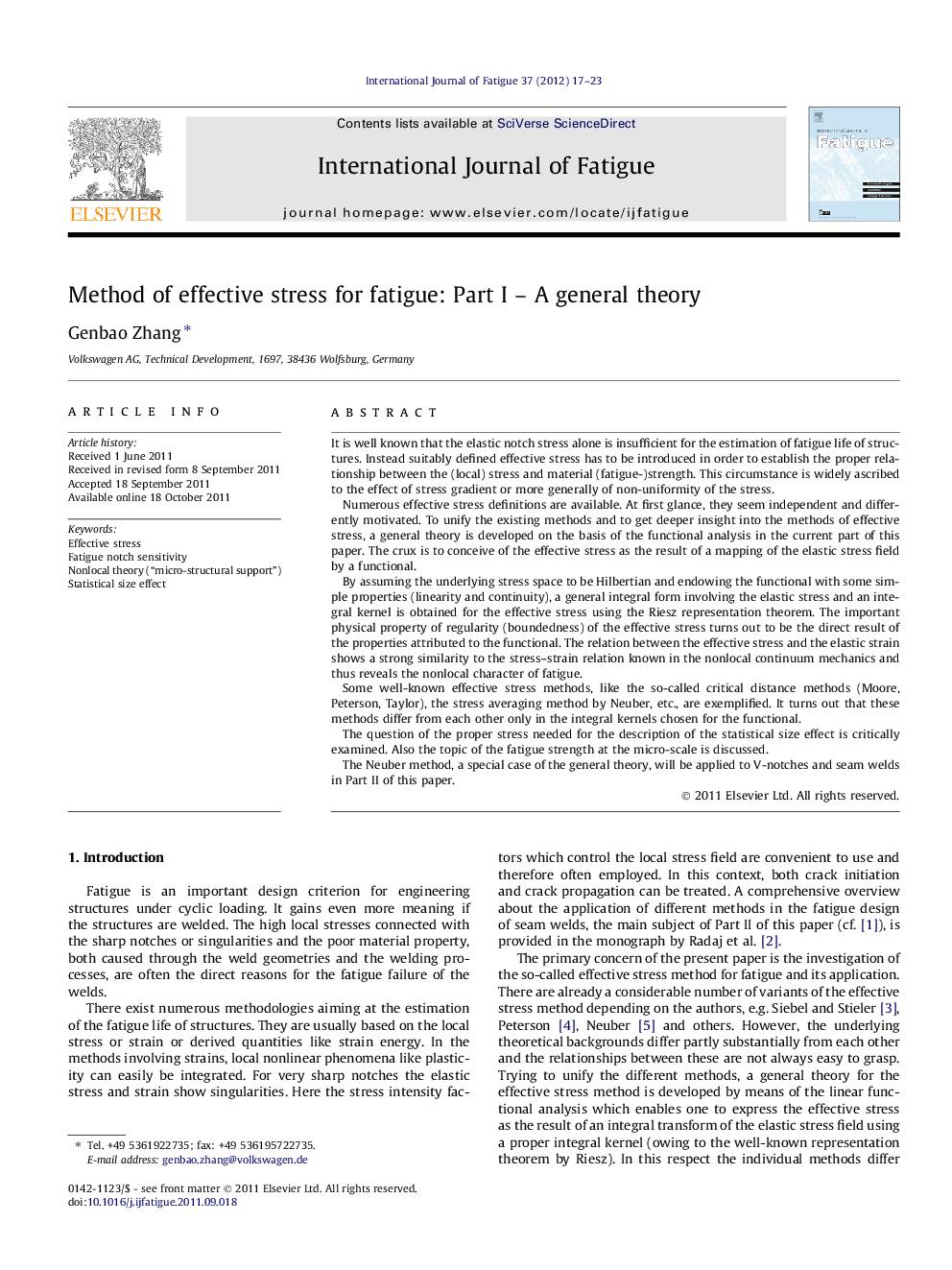| Article ID | Journal | Published Year | Pages | File Type |
|---|---|---|---|---|
| 777758 | International Journal of Fatigue | 2012 | 7 Pages |
It is well known that the elastic notch stress alone is insufficient for the estimation of fatigue life of structures. Instead suitably defined effective stress has to be introduced in order to establish the proper relationship between the (local) stress and material (fatigue-)strength. This circumstance is widely ascribed to the effect of stress gradient or more generally of non-uniformity of the stress.Numerous effective stress definitions are available. At first glance, they seem independent and differently motivated. To unify the existing methods and to get deeper insight into the methods of effective stress, a general theory is developed on the basis of the functional analysis in the current part of this paper. The crux is to conceive of the effective stress as the result of a mapping of the elastic stress field by a functional.By assuming the underlying stress space to be Hilbertian and endowing the functional with some simple properties (linearity and continuity), a general integral form involving the elastic stress and an integral kernel is obtained for the effective stress using the Riesz representation theorem. The important physical property of regularity (boundedness) of the effective stress turns out to be the direct result of the properties attributed to the functional. The relation between the effective stress and the elastic strain shows a strong similarity to the stress–strain relation known in the nonlocal continuum mechanics and thus reveals the nonlocal character of fatigue.Some well-known effective stress methods, like the so-called critical distance methods (Moore, Peterson, Taylor), the stress averaging method by Neuber, etc., are exemplified. It turns out that these methods differ from each other only in the integral kernels chosen for the functional.The question of the proper stress needed for the description of the statistical size effect is critically examined. Also the topic of the fatigue strength at the micro-scale is discussed.The Neuber method, a special case of the general theory, will be applied to V-notches and seam welds in Part II of this paper.
